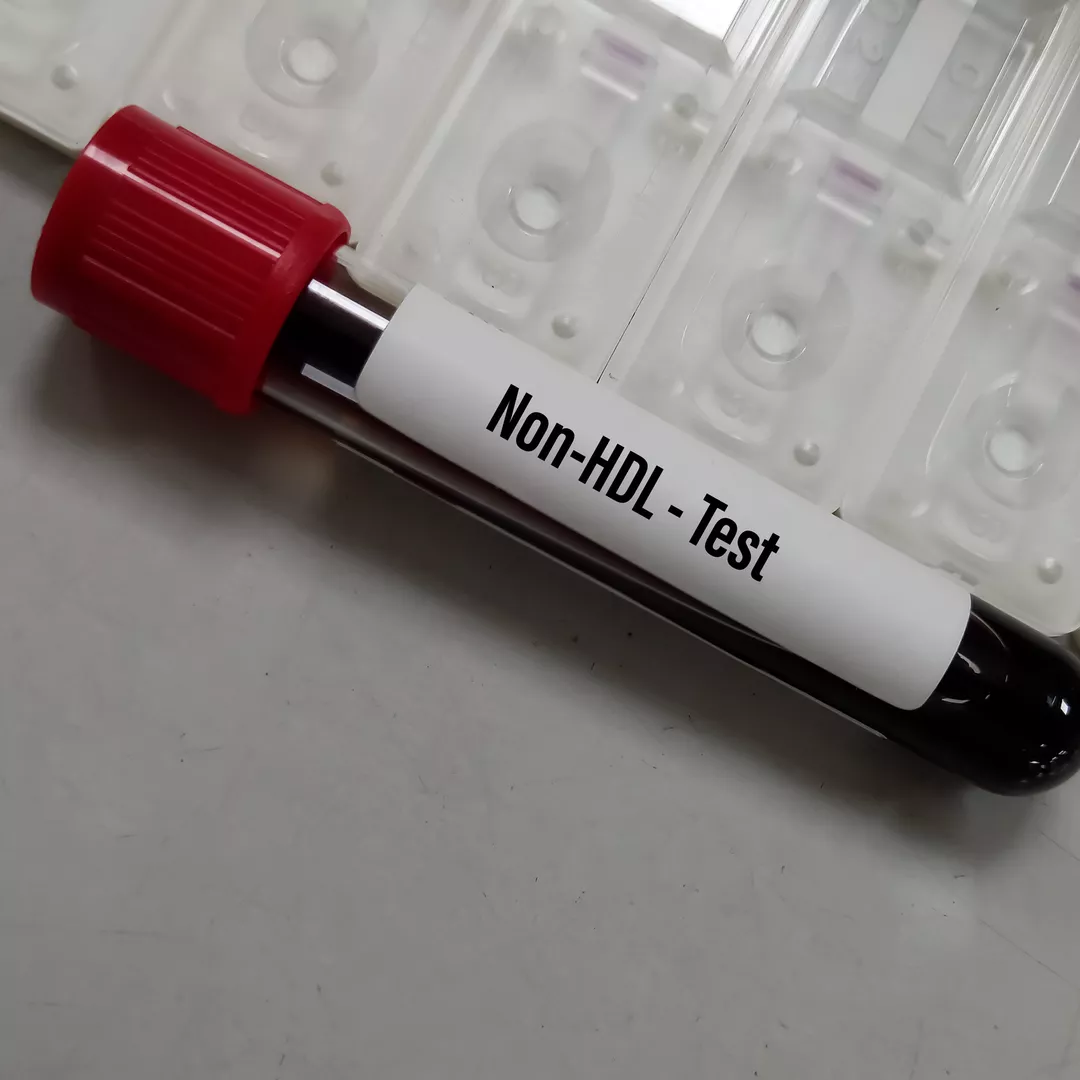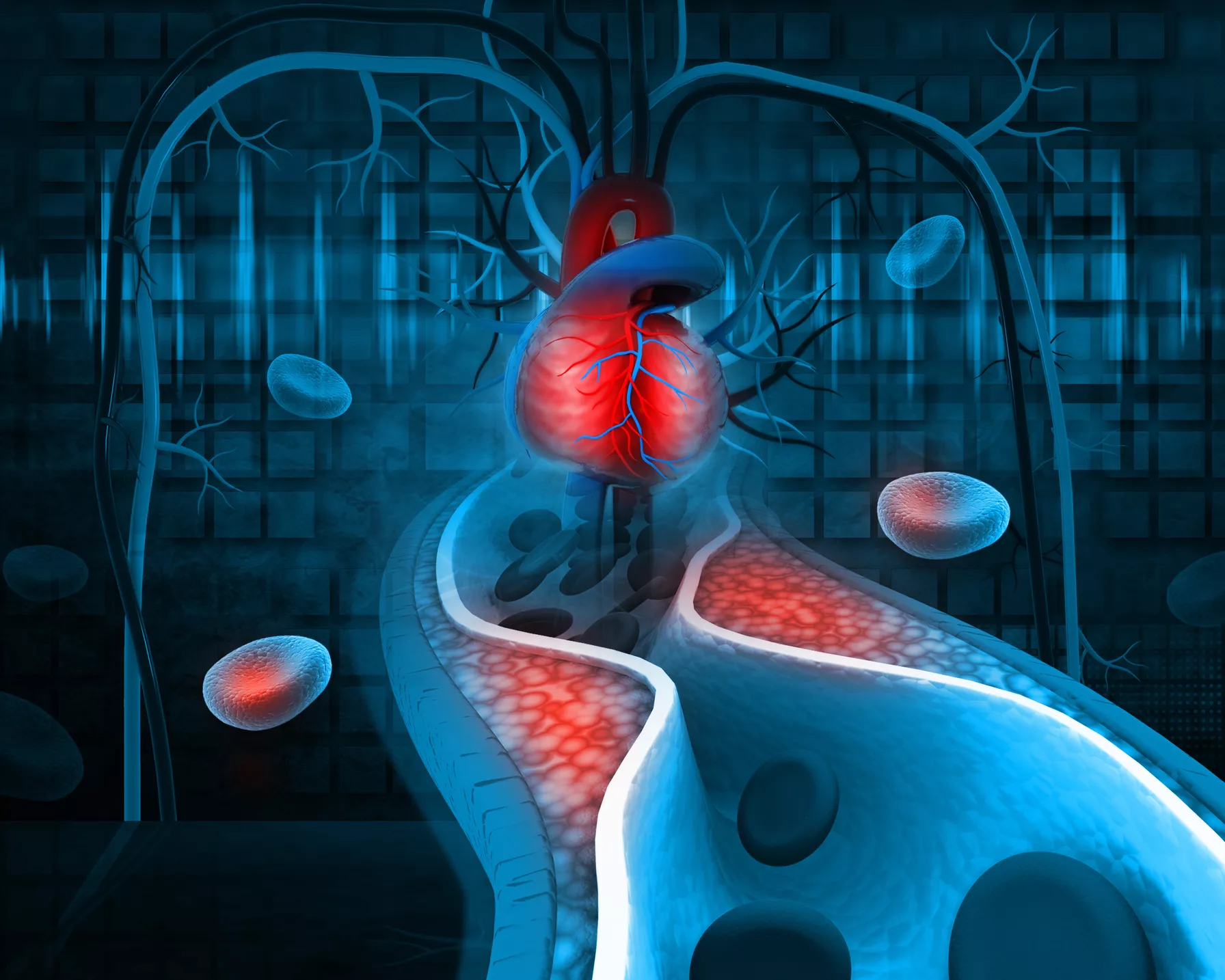When it comes to cholesterol, many people are familiar with terms like "LDL" (low-density lipoprotein or “bad” cholesterol) and "HDL" (high-density lipoprotein or “good” cholesterol).
These two types of cholesterol often take the spotlight in discussions about heart health. However, there's another type of cholesterol that is important when it comes to predicting your risk of heart conditions and cardiovascular diseases (CVDs) like heart attack and stroke – non-HDL cholesterol.
Non-HDL cholesterol definition
Non-HDL cholesterol is a comprehensive measure of all the cholesterol carried by lipoproteins other than HDL. As the name implies, non-HDL cholesterol is basically your HDL or “good” cholesterol number subtracted from your total cholesterol number. In other words, it’s a measure of all the “bad” types of cholesterol.
For predicting your risk of heart disease, many doctors now believe that determining your non-HDL cholesterol level may be more useful than calculating your cholesterol ratio.
To understand non-HDL cholesterol, it's essential to understand the basics of lipoproteins.
Lipoproteins are like tiny cholesterol carriers in your bloodstream, transporting cholesterol to different parts of your body. They are classified into several types, with the two most prominent being LDL and HDL.
- Low-density lipoprotein (LDL): Often referred to as "bad" cholesterol, LDL carries cholesterol from the liver to various cells throughout the body. When there is an excess of LDL in the bloodstream, it can deposit cholesterol in the walls of arteries, leading to the development of fatty plaques. This process, known as atherosclerosis, is a major risk factor for heart disease.
- High-density lipoprotein (HDL): HDL is often dubbed "good" cholesterol because it plays a crucial role in removing excess cholesterol from the bloodstream and transporting it back to the liver for disposal. Higher levels of HDL are associated with a lower risk of heart disease.
Non-HDL cholesterol encompasses all cholesterol carried by lipoproteins other than HDL. This includes LDL as well as other cholesterol-containing particles like very low-density lipoprotein (VLDL) and intermediate-density lipoprotein (IDL). Non-HDL cholesterol provides a more comprehensive picture of your overall cholesterol load, making it a valuable tool for assessing cardiovascular risk
Why is non-HDL cholesterol important?
Non-HDL cholesterol is a key factor in the development of atherosclerosis and subsequent heart disease. Here's why it's important.
- Predictor of cardiovascular risk: Research has shown that non-HDL cholesterol may be a better predictor of cardiovascular risk compared to LDL cholesterol alone. By including all atherogenic lipoproteins, it provides a more accurate representation of the cholesterol content that can contribute to plaque formation in your arteries.
- Reflects total atherogenic load: Non-HDL cholesterol accounts for the cholesterol content carried by LDL, VLDL, and IDL particles. These particles can all contribute to atherosclerosis when elevated, making non-HDL cholesterol a more inclusive measure of your total atherogenic load.
- Simplicity in interpretation: Non-HDL cholesterol is easy to interpret. You simply subtract your HDL cholesterol level from your total cholesterol level to obtain your non-HDL cholesterol value. This simplicity makes it a valuable tool for both healthcare providers and individuals in assessing heart disease risk. According to Harvard Health, its use and relevance may continue to rise as you don’t need to fast to check your non-HDL cholesterol.
- Target for intervention: Guidelines for heart disease prevention often include specific target values for non-HDL cholesterol. By managing non-HDL cholesterol levels, individuals can work towards reducing their risk of cardiovascular events such as heart attack and stroke.
Cholesterol ratio
Cholesterol ratio is a measure that compares the levels of two types of cholesterol in your blood: LDL cholesterol and HDL cholesterol. This ratio provides valuable information about your cardiovascular health and risk of heart disease.
Your doctor can provide advice as to your cholesterol ratio. The formula to calculate this ratio divides total cholesterol by HDL cholesterol as follows:
Cholesterol Ratio = Total Cholesterol (mg/dL) / HDL Cholesterol (mg/dL)
For example, if your total cholesterol is 200 mg/dL, and your HDL cholesterol is 50 mg/dL, your cholesterol ratio would be 4 (200 ÷ 50 = 4).
The cholesterol ratio is expressed as a single number. A lower cholesterol ratio is generally considered better for heart health, as it indicates a lower risk of heart disease. Here's how cholesterol ratio results are typically interpreted.
- Desirable ratio: A cholesterol ratio of less than 3.5 is considered desirable and associated with a lower risk of heart disease.
- Moderate risk: A cholesterol ratio between 3.5 and 5.0 indicates a moderate risk of heart disease.
- High risk: A cholesterol ratio of 5.0 or higher is considered high risk, indicating an increased likelihood of heart disease.
It's important to note that while the cholesterol ratio provides useful information, it should not be the sole factor considered in assessing cardiovascular risk. Other factors, such as blood pressure, smoking status, family history, and overall lifestyle, also play a significant role in determining your risk of heart disease.
High cholesterol levels can increase the risk of cardiovascular disease. Stock image.
What does it mean when your non-HDL cholesterol is high?
When your non-HDL cholesterol is high, it means that you have elevated levels of cholesterol-containing particles in your bloodstream, specifically those that are not part of the HDL faction.
Here's what it means and why it's significant.
- Increased cardiovascular risk: High non-HDL cholesterol levels are associated with an increased risk of CVD, particularly atherosclerosis, coronary artery disease, and heart attack. Atherosclerosis occurs when cholesterol-rich plaques build up in the walls of arteries, narrowing them and restricting blood flow.
- Contributing to plaque formation: Non-HDL cholesterol, especially LDL cholesterol, plays a significant role in the development of atherosclerotic plaques. When LDL cholesterol levels are high, it can lead to the accumulation of cholesterol in arterial walls, initiating the process of plaque formation.
- Potential for blood vessel blockage: As atherosclerotic plaques progress, they can become unstable and rupture, leading to blood clots. These blood clots can partially or completely block blood flow through the affected artery, resulting in various cardiovascular events, such as heart attack or stroke.
- Importance of management: High non-HDL cholesterol is a modifiable risk factor, meaning that it can be managed through lifestyle changes and, if necessary, medications. Reducing non-HDL cholesterol levels can significantly lower your cardiovascular risk.
When should you be concerned about non-HDL cholesterol?
High non-HDL cholesterol should not be ignored. The higher your non-HDL cholesterol, the higher your risk of CVD.
Non-HDL cholesterol levels elevated above 3 millimoles per litre (mmol/L) can be a cause for concern. Guidelines for target cholesterol levels vary based on factors such as age and family history, so ask your doctor what levels are right for you.
In general:
- Total cholesterol levels should be lower than 5.5 mmol/L in adults with no other risk factors for CVD.
- LDL cholesterol levels should be less than 2 mmol/L if you have CVD risk factors or pre-existing CVD or diabetes.
- HDL cholesterol levels should be kept higher and at a minimum of 1.5 mmol/L. Low HDL cholesterol levels can be a major risk factor for CVD.
Safe levels of cholesterol
| Desirable (mmol/L) | Borderline (mmol/L) | High (mmol/L) | |
|---|---|---|---|
| HDL cholesterol | >1.5 | N/A | N/A |
| LDL cholesterol | 1.7–3.5 | 3.6–4.5 | >4.5 |
| Triglycerides | 0.5–1.7 | 1.8–2.5 | >2.5 |
| Total | 3.9–5.5 | 5.5–6.5 | >6.5 |
It's essential to assess your overall cardiovascular risk based on your individual health profile. Factors that can increase concern about non-HDL cholesterol levels include the following.
- Personal history: If you have a history of heart disease, stroke, or other cardiovascular conditions, high non-HDL cholesterol levels can be more of a concern.
- Family history: A family history of heart disease, especially at a young age, may indicate a genetic predisposition to high cholesterol levels.
- Other risk factors: Smoking, high blood pressure (hypertension), diabetes, obesity, and a sedentary lifestyle are additional risk factors.
How to lower non-HDL cholesterol level
To lower your non-HDL cholesterol, healthcare providers may recommend the following strategies.
- Avoid foods high in unhealthy saturated and trans fats: Adopt a heart-healthy diet that is low in saturated fats, trans fats, and cholesterol. This includes processed foods and meats like sausage and salami, deep-fried fast food, cakes and ice cream, and snack foods like chips and chocolate.
- Eat more fibre and healthy fats: Focus on consuming fruits, vegetables, whole grains, lean proteins, and foods rich in omega-3 fatty acids like fatty fish, avocado and nuts.
- Lead an active lifestyle with regular exercise: Regular physical activity can help raise HDL cholesterol levels and lower non-HDL cholesterol. This will also help you maintain a healthy weight.
- Limit alcohol intake: Limiting alcohol intake can help decrease high cholesterol and may help lower triglyceride levels. Excessive amounts of alcohol can reduce levels of the “good” HDL cholesterol.
- Quit smoking: If you smoke, quitting is one of the most effective steps you can take to improve your lipid profile and overall cardiovascular health.
- Take medications as prescribed: Your doctor may prescribe medicines to lower cholesterol (for example, statins such as atorvastatin, rosuvastatin and simvastatin). They reduce how much cholesterol your body produces, so it doesn’t build up in your blood vessels. Statins can lower your risk of a heart attack or stroke and are sometimes recommended for people at high risk. However, it’s important to maintain a healthy lifestyle as well as to take your medications as prescribed.
- Regular monitoring: Regular check-ups with your healthcare provider are crucial to monitor your lipid profile, including non-HDL cholesterol. Adjustments to your treatment plan can be made based on your progress and any changes in your health.
Early intervention and management are essential for reducing your risk of cardiovascular events.
Remember that cardiovascular risk is complex, and managing cholesterol levels is just one aspect of overall heart health.
Lifestyle modifications, including a heart-healthy diet, regular exercise, and smoking cessation, can significantly impact your risk of heart disease, and your healthcare provider will consider all these factors when determining the appropriate course of action.
How is HRI fighting high cholesterol?
HRI is conducting groundbreaking research from a broad range of angles to understand how atherosclerotic plaque, which consists of cholesterol and other substances, develops through atherosclerosis and to find innovative ways of preventing, detecting and treating the resultant CVD.
Our Atherosclerosis and Vascular Remodelling Group focuses on identifying and gaining insights from the pathways involved in the build-up of atherosclerotic plaque, which could be used to improve treatments for atherosclerotic plaque.
Our Clinical Research Group is focusing on children and young adults with risk factors for early heart disease such as high levels of cholesterol, and on how to prevent the development of atherosclerosis. Early detection and prevention may save hundreds of thousands of lives from CVD each year.


